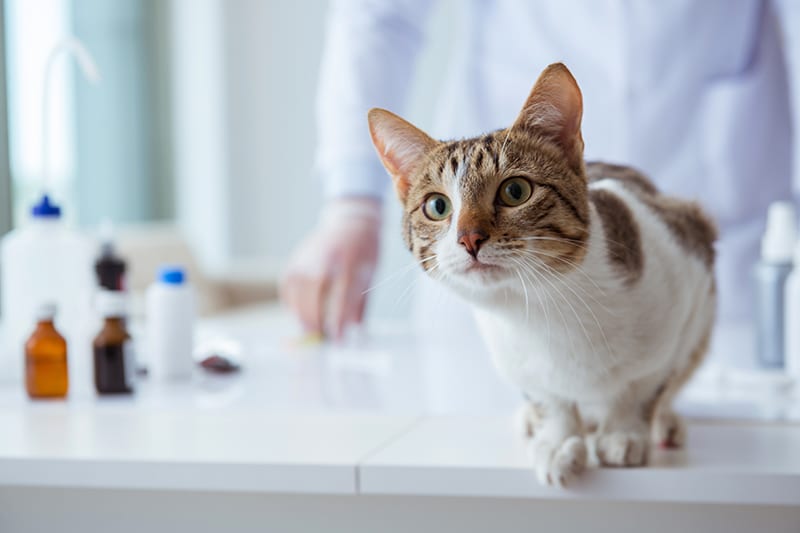Caring for our feline friends means ensuring their long and healthy lives. As pet owners, we have a responsibility to protect our cats from preventable diseases. One of the most crucial steps in doing so is by vaccinating them against common feline illnesses. The FVRCP vaccine, recommended by our experts at Pawsoha, is a vital component of your cat’s health care routine.
Core Vaccines for Maximum Protection
The FVRCP vaccine is one of the core vaccines for cats. These vaccines are strongly recommended for all cats, regardless of whether they are indoor or outdoor pets. The other essential core vaccine for cats is the Rabies vaccine, which is not only recommended but also required by law in most states.
Even if your cat is primarily indoors, it’s crucial to understand that the viruses causing these severe feline conditions can survive on surfaces for up to a year. This means that even a brief escape outdoors can put your furry friend at risk of exposure to these viruses.
Diseases That the FVRCP Vaccine Protects Against
The FVRCP vaccine is highly effective in safeguarding your cat against three highly contagious and potentially life-threatening diseases:
Feline Viral Rhinotracheitis (FVR)
FVR, or feline herpesvirus type 1 (FHV-1), is responsible for a significant percentage of infectious upper respiratory diseases in cats. This disease affects the nose, windpipe, and can cause complications during pregnancy.
Symptoms of FVR include fever, sneezing, inflamed eyes and nose, and discharge. While symptoms may be mild in healthy adult cats, they can persist for up to six weeks or longer in severe cases. Kittens, senior cats, and immune-compromised felines are at higher risk, experiencing symptoms such as depression, loss of appetite, severe weight loss, and mouth sores.
Feline Calicivirus (FCV)
FCV is a major cause of upper respiratory infections and oral disease in cats. Symptoms include nasal congestion, sneezing, eye inflammation, and discharge. Cats infected with FCV often suffer from loss of appetite, weight loss, fever, enlarged lymph nodes, squinting, lethargy, and painful ulcers in the mouth.
It’s important to note that FCV has multiple strains, some of which can lead to pneumonia, fever, joint pain, and lameness.
Feline Panleukopenia (FPL)
FPL is a highly common and serious virus that damages bone marrow, lymph nodes, and the lining of the intestines. Symptoms include depression, loss of appetite, high fever, lethargy, vomiting, severe diarrhea, nasal discharge, and dehydration. Kittens are particularly susceptible to this disease, and it is often fatal in this age group.
There is currently no cure for FPL, and treatment primarily involves managing symptoms such as dehydration and shock through IV fluid therapy and intensive nursing care.
Vaccination Schedule for Optimal Protection
To provide your cat with the best possible protection against FHV, FCV, and FPL, it is crucial to follow the recommended vaccination schedule. The initial FVRCP vaccination should be administered when your cat is around 6-8 weeks old, followed by booster shots every three to four weeks until they reach 16-20 weeks of age. Afterward, a booster should be given at just over one year old, followed by subsequent boosters every three years throughout their lifetime.
For more detailed information on when your cat should receive vaccines, please refer to our vaccination schedule at Pawsoha.
Potential Side Effects
Side effects from the FVRCP vaccine in cats are uncommon, and when they do occur, they are generally mild. Most cats may experience a slight fever or feel a bit off for a day or two. Some swelling at the injection site is also normal.
In extremely rare cases, more severe reactions can occur. These reactions may manifest immediately or up to 48 hours after vaccination and can include symptoms such as hives, swelling around the lips and eyes, itchiness, fever, diarrhea, vomiting, and breathing difficulties. If you observe any of these severe symptoms, please contact your veterinarian or visit the nearest emergency animal hospital immediately.
Please note that the information provided in this article is for informational purposes only and does not replace professional veterinary advice. If you have any concerns or require an accurate diagnosis of your pet’s condition, please schedule an appointment with your vet.
Frequently Asked Questions
Q: Is the FVRCP vaccine necessary for indoor cats?
A: Yes, indoor cats should receive the FVRCP vaccine because the viruses can survive on surfaces and are highly contagious.
Q: Can the FVRCP vaccine cause side effects in cats?
A: Side effects are uncommon and generally mild. Severe reactions are extremely rare but should be addressed immediately.
Q: How often should my cat receive the FVRCP vaccine?
A: Following the initial vaccinations, boosters should be administered every three years throughout their lifetime.
Conclusion
The FVRCP vaccine is essential for protecting your beloved feline friend from highly contagious and potentially life-threatening diseases. By following the recommended vaccination schedule, you’re taking proactive steps to promote a long and healthy life for your cat. Remember to consult your veterinarian for personalized guidance and ensure the well-being of your furry companion.
